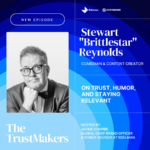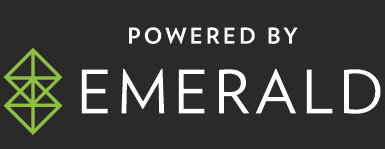By Gareth Harrison, Strategy & Innovation Director at SocialChain
Social media has always been a moving target. What began as a place for connection is now also a melting pot of entertainment, discovery, and commerce.
Yet many brands still plan as though social follows a linear path, with discovery at the top, conversion at the bottom, and separate teams responsible for each step. That separation is no longer fit for purpose, and the results show it.
The “media lift effect” challenges this split. It treats social not as a set of isolated tactics but as a connected system where brand and performance work together. When that alignment happens, the impact compounds. Campaigns that once burned through budget start to generate measurable growth.
Discovery drives demand
The biggest shift in recent years is how discovery fuels action. People are stumbling across products while scrolling Instagram Reels, exploring creators’ hauls on YouTube, or entering a TikTok rabbit hole.
They are buying in moments of curiosity, not after long periods of research. Yet many strategies still rely on search or last-click attribution, missing the truth that intent is now created in the feed.
The media lift effect reframes social as a full-funnel engine, not as separate boxes but instead as overlapping behaviours. TikTok has blurred those lines by making shopping feel like entertainment, and Instagram’s integration of shops and checkout options has made the journey from impression to purchase almost invisible.
When brands recognise this, their strategies start to look very different. Paid media fuels reach and precision, but only when creative earns attention. Organic content offers a live testing ground, helping teams identify which messages resonate before scaling them with budget. When these strands connect, discovery doesn’t just create awareness, it drives demand.
Creative is performance
For years performance marketing has been framed as a media problem, solved by smarter targeting or bigger budgets. But the data tells a different story. Creative is now the single biggest lever of effectiveness, contributing up to 70 per cent of campaign success. Paid cannot rescue underperforming content.
The media lift effect places creative at the centre of performance. That means content has to feel native to the feed and speak to audiences’ motivations.
The best assets are not always the most polished. They are the ones that spark curiosity and still have the clarity to convert in the same moment.
Campaigns that rework creative for performance and test it organically before scaling with paid media show stronger outcomes. The gains do not come from simply throwing money at impressions. They happen by aligning creative decisions with audience behaviour and media delivery, allowing each element to reinforce the other.
This is where silos become costly. When brand and performance teams run separately, creative ends up serving two masters yet failing them both. A single system, guided by audience insight, allows creative to open the door, media to get it seen, and data to refine what comes next.
Learning beats guessing
The final shift is mindset. In traditional planning, media was often locked down at the start and creative was treated as a one-off asset drop. Social doesn’t work like that. Audiences zigzag between discovery and conversion. Content that worked last month can be obsolete today. Continuous testing is not optional, it is the system.
The media lift effect builds feedback loops between organic and paid. A post that drives strong saves or watch time organically should be amplified with spend. The results of that paid push then inform the next round of organic content. Over time, this loop cuts waste and sharpens performance.
Measurement must also evolve. Click-through rates and impressions give a surface-level view but fail to capture how social drives broader outcomes. What really matters is understanding how discovery content shapes intent, how engagement builds trust, and how those factors influence conversion down the line. These signals connect social activity to commercial growth more effectively than vanity metrics ever could.
Testing across passive, active, and customer phases ensures brands understand what good looks like at each stage. The goal is not to optimise for one metric but to see the compound effect of all activity. When discovery content influences search behaviour downstream, or when engagement builds trust that lifts conversion later, the system is working.
Social has outgrown the old split between brand and performance. People don’t move through funnels in neat steps, so campaigns built around silos will always spill value over the sides. The media lift effect offers a way forward by connecting performance, creative excellence, and media precision into one finely tuned engine.











